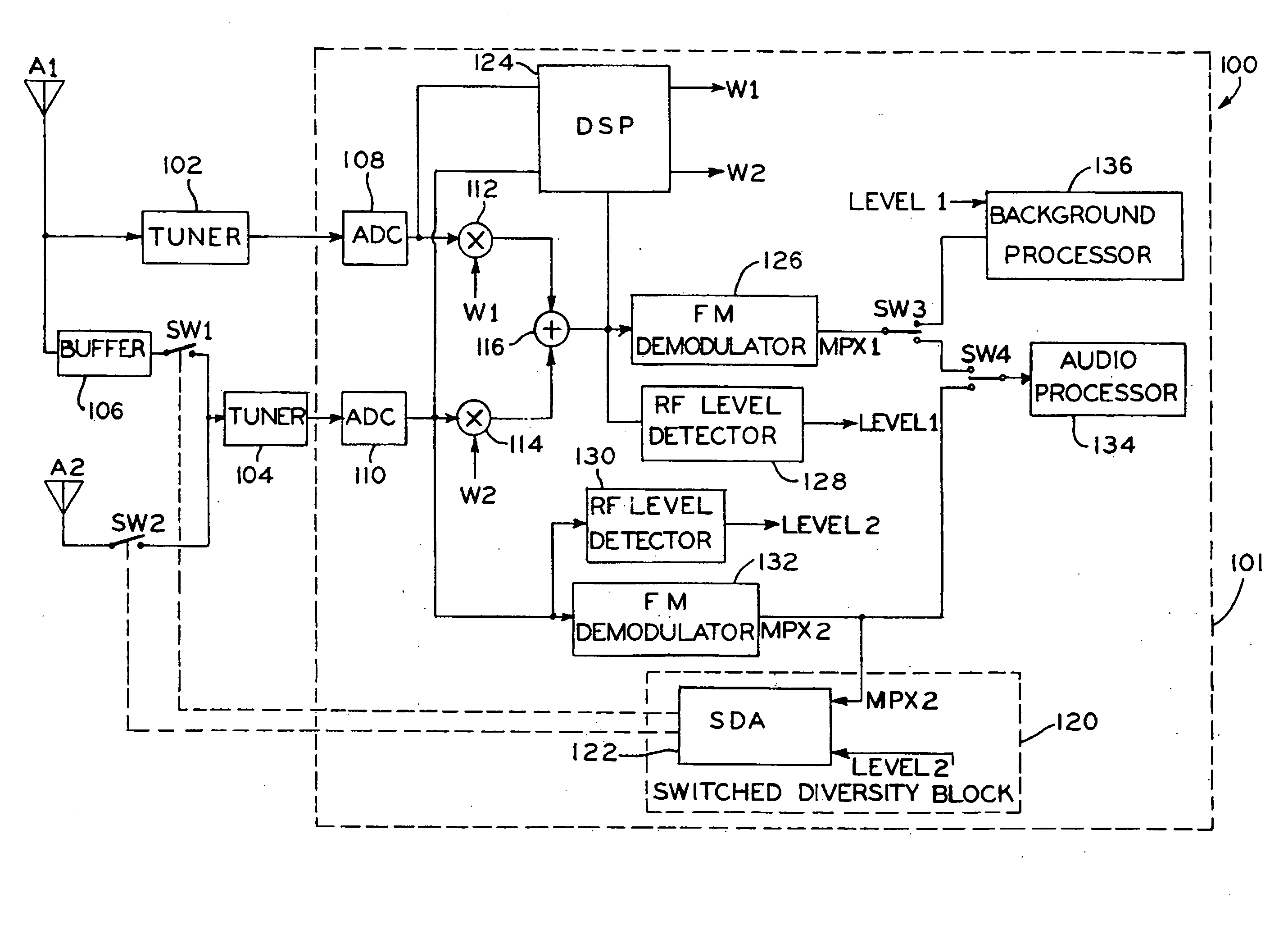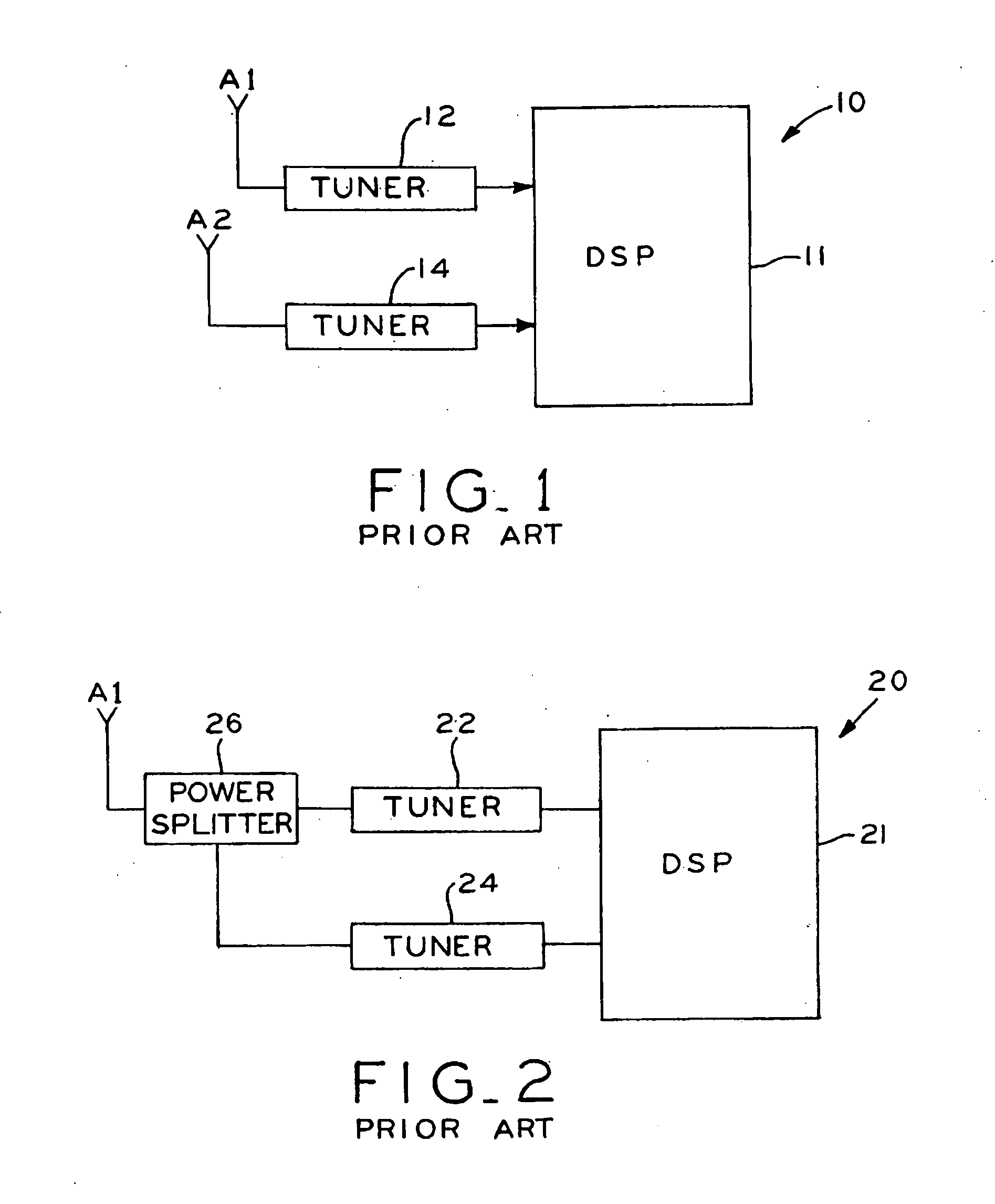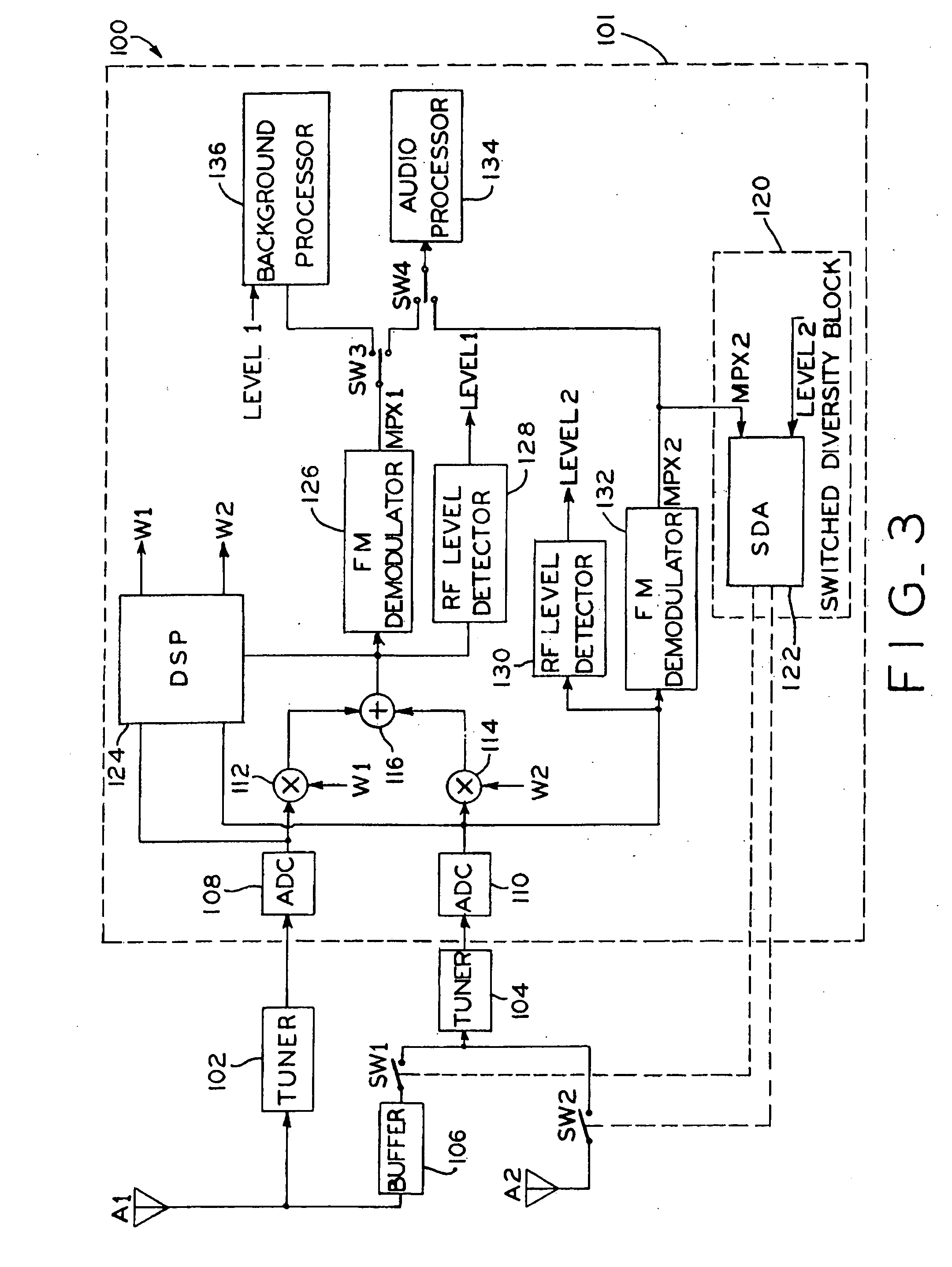Dual tuner diversity for background processing and to reduce multipath distortion
a multi-path distortion and background processing technology, applied in the field of dual tuner diversity, can solve the problems of long delay multi-path, distortion of audio recovered from signals, and increased implementation costs of egc and mrc systems, so as to reduce multi-path distortion, reduce multi-path distortion, and reduce multi-path distortion
- Summary
- Abstract
- Description
- Claims
- Application Information
AI Technical Summary
Benefits of technology
Problems solved by technology
Method used
Image
Examples
Embodiment Construction
[0025] The embodiments discussed below are not intended to be exhaustive or limit the invention to the precise forms disclosed in the following detailed description. Rather, the embodiments are chosen and described so that others skilled in the art may utilize their teachings.
[0026] Today, manufacturers of automotive radios have moved from analog receiver systems to receiver systems that have increasingly incorporated more digital components within the receiver systems. As a general rule, the functions that are performed by these digital components are being increasingly implemented in digital signal processing (DSP) software.
[0027] With reference to FIG. 3, an exemplary radio receiver system 100 is shown, which includes antennas Al and A2 and DSP 101. Antenna Al is coupled to front-end tuner 102. The output of tuner 102 is provided to an input of an analog-to-digital converter (ADC) 108, which converts the received analog signal to a digital signal. An output of ADC 108 is couple...
PUM
 Login to View More
Login to View More Abstract
Description
Claims
Application Information
 Login to View More
Login to View More - R&D
- Intellectual Property
- Life Sciences
- Materials
- Tech Scout
- Unparalleled Data Quality
- Higher Quality Content
- 60% Fewer Hallucinations
Browse by: Latest US Patents, China's latest patents, Technical Efficacy Thesaurus, Application Domain, Technology Topic, Popular Technical Reports.
© 2025 PatSnap. All rights reserved.Legal|Privacy policy|Modern Slavery Act Transparency Statement|Sitemap|About US| Contact US: help@patsnap.com



